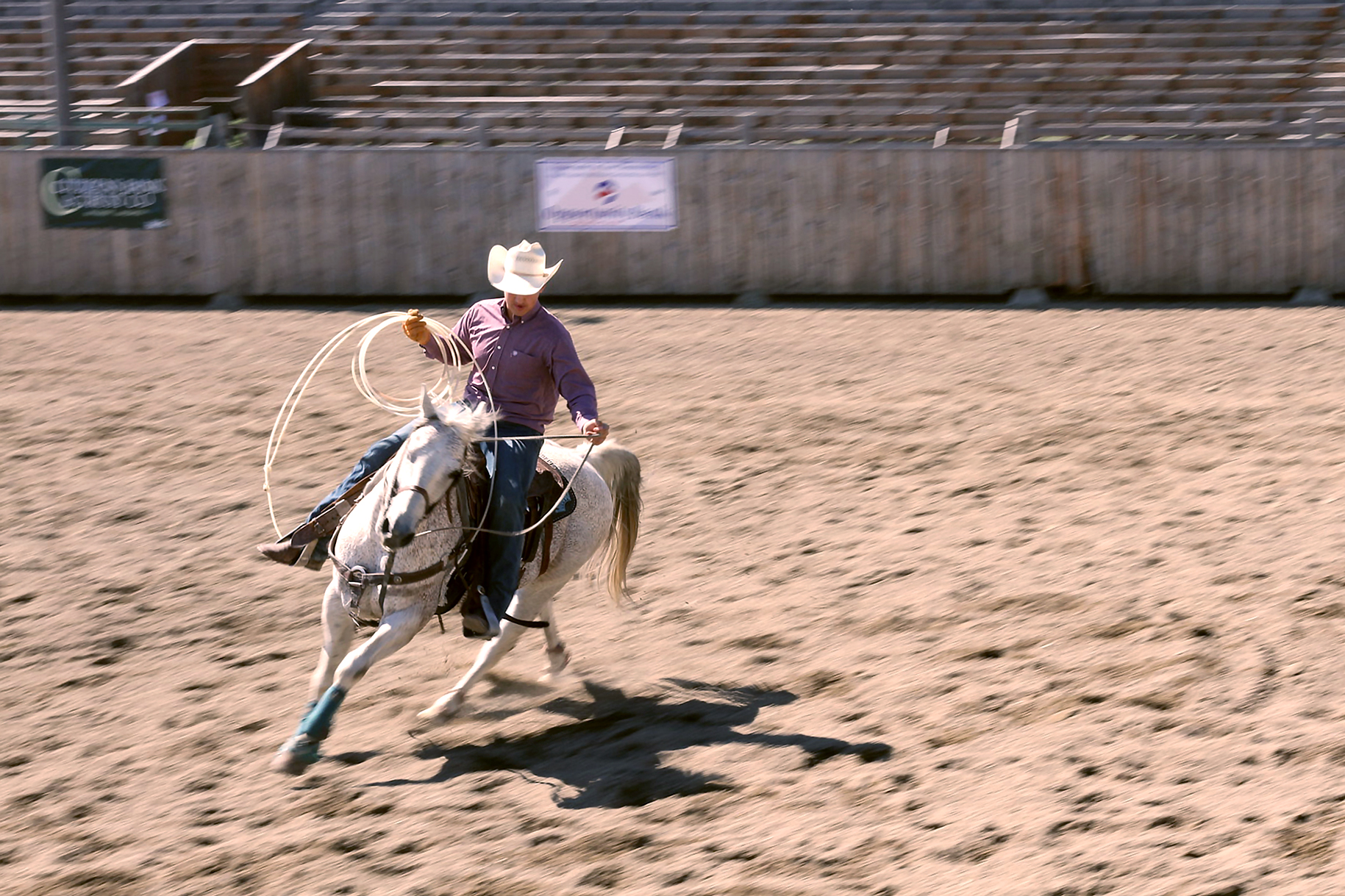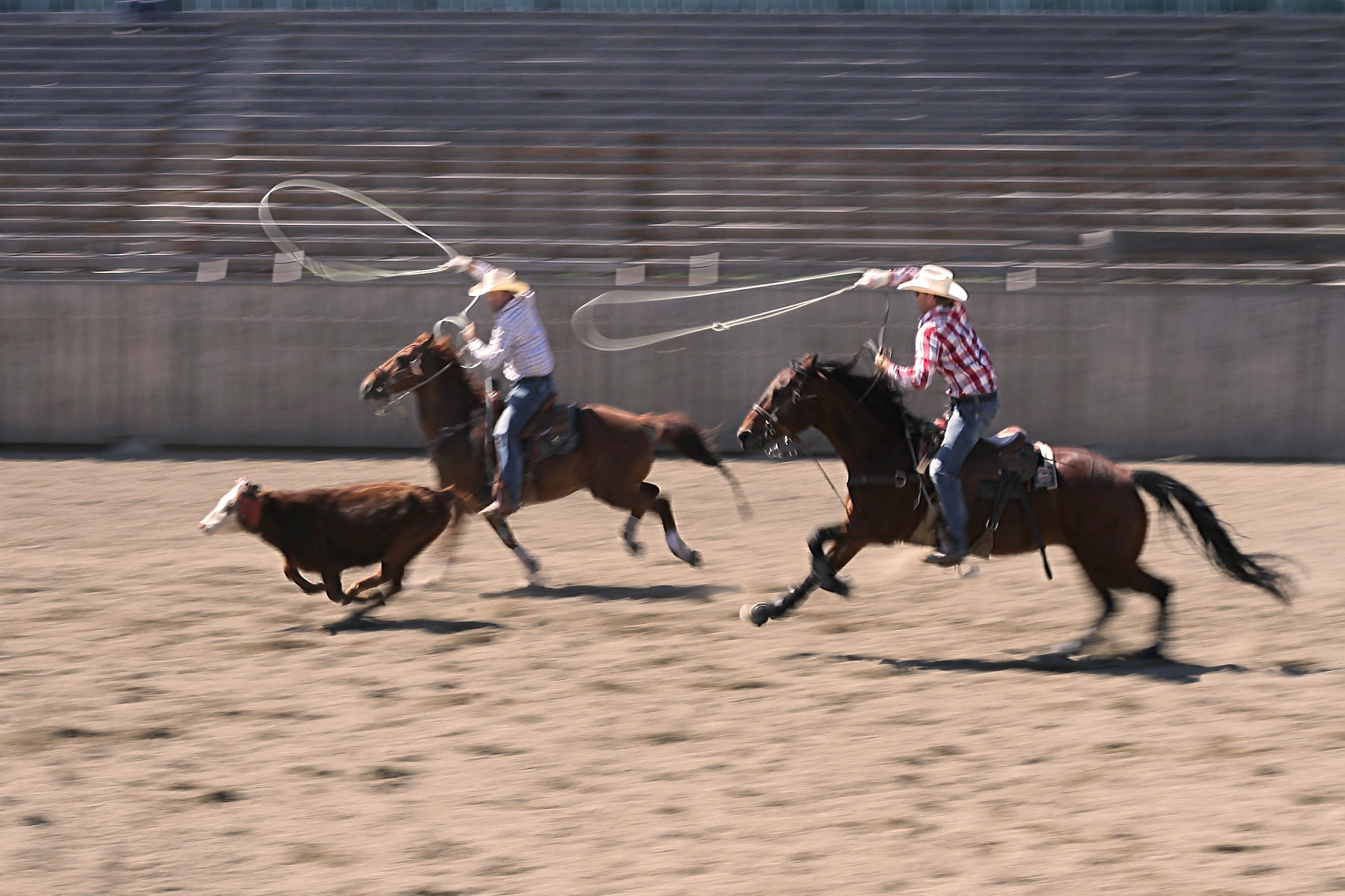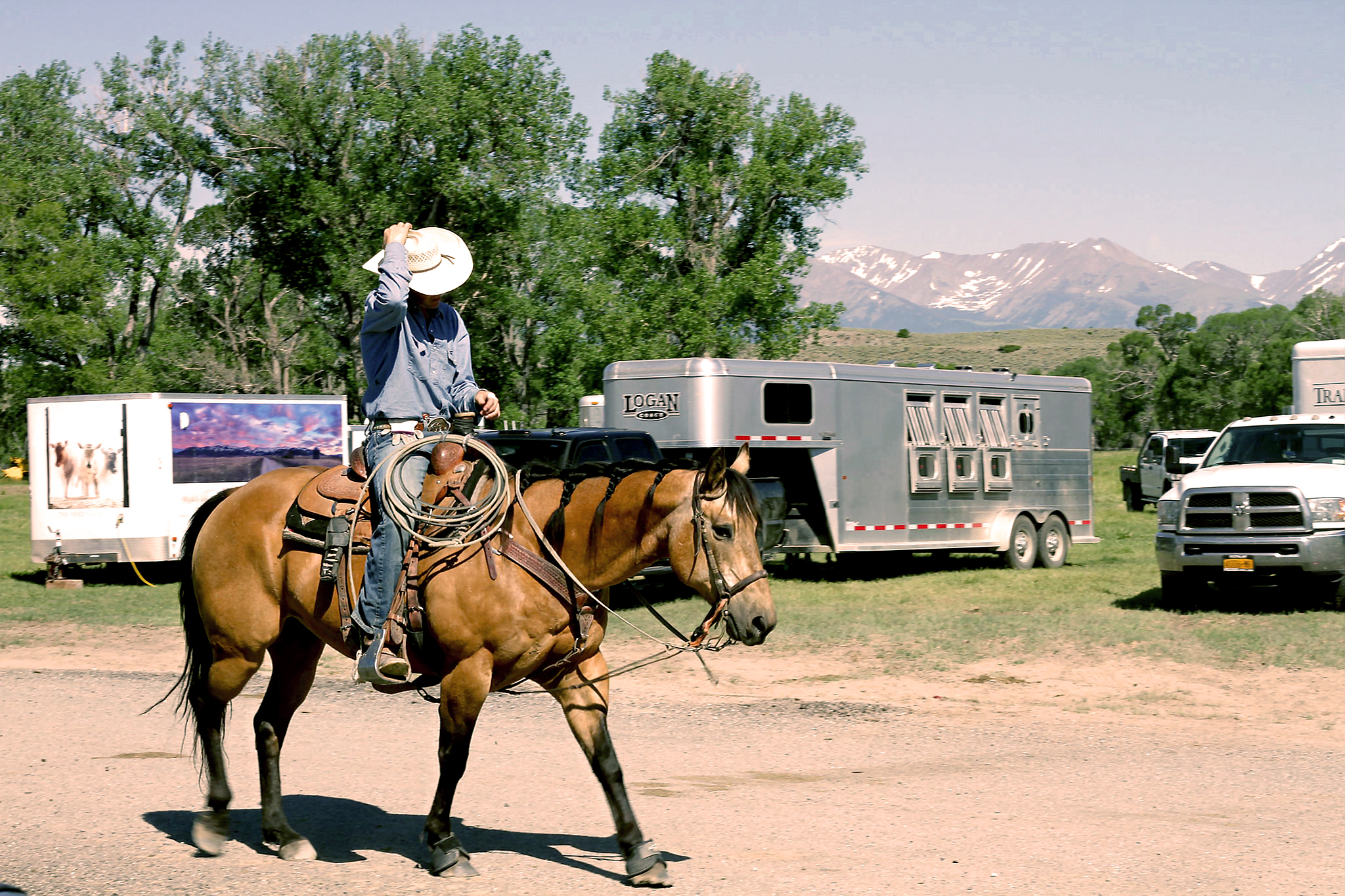
Big Timber, Montana
The archetype of the American cowboy that is infused in western popular culture is perhaps embodied by Clint Eastwood in The Good, the Bad and the Ugly. Yet, this simple image conceals a multifaceted history that spans cultures, geographies, genders and identities. Artist and researcher, Brandon Sward, muses over the often-overlooked complexity of the image of the cowboy, inspired by the rodeos of Big Timber, Montana.
The Good, the Bad and the Ugly was fresh on my mind when I moved to Big Timber, Montana (population: 1,641). I’d been coming to the city my entire life, as it was the home to much of my father’s family. During our summer visits, we would often attend the local rodeo, which drew contestants from near and far. I remember hours of roping, wrestling, riding, racing. The calves, bulls, and horses. The hats and ropes. These evenings were not only an animal education but also (by extension?) a masculine one.
For much of The Good, the Bad, and the Ugly, Clint Eastwood’s mouth hardly moves. His thin lips spend more time juggling a short cigarette than forming words. Narrow eyes scan a horizon that stretches into infinity in every direction, punctuated by only rocks and shrubs. This is the fantasy of the frontier, that unstable boundary between civilisation and wilderness, symbolised by the standoff between cowboy and Indian.

While we think of the cowboy as quintessentially “American,” it is like so much of that country syncretic (as if to drive home the point, the renowned Italian director Sergio Leone shot most of the film in Spain). The figure of the cowboy has its roots in Mexico, to which the entirety of what is now the Western US once belonged.
When these territories dubiously switched hands in the aftermath of the Mexican–American War, the United States was able to pursue its dream of extending from sea to sea, epitomised in the belief of manifest destiny and that John Gast painting which has been reproduced in every US history textbook from time immemorial, in which Columbia (the female personification of the US) leads white settlers Westward, laying a telegraph wire with one hand and carrying a school book in the other. The “Mexican Cession,” as it has come to be called, remains the nation’s third-largest acquisition of land after Alaska and the Louisiana Purchase.

But let us return to Eastwood, white masculinity incarnate. As if to further deify him, his character is most often referred to as “the Man with No Name” (cf., the tetragrammaton, the four-letter Hebrew word for the god of the Israelites, whose name the Talmud forbids speaking). His other aliases include: The Stranger, The Hunter, The Bounty Killer, Americano, Mister Sudden Death, The Good (as per the title), Señor Ninguno (Mr. No One), and most memorably Blondie, though in this case much closer to Friedrich Nietzsche than Debbie Harry.1
As befits a character so superhuman, Eastwood is mostly understood by contrast. To continue the religious metaphor, one might reference apophatic or “negative” theology, which attempts to define the divine by what it is not (instead of “God is good,” try “God is not bad”). Eastwood is not The Bad, a ruthless and sadistic mercenary, and certainly not The Ugly, a fast-talking and oafish though cunning Mexican bandit, whose name stretches to infinity in some parody of Latinate excess: Tuco Benedicto Pacífico Juan María Ramírez.
Nowadays, however, cowboys do not look like this. A more accurate representation might be found in Chloé Zhao’s The Rider. Set on the Lakota Sioux Pine Ridge Reservation, the story centres on Brady Blackburn, a rising rodeo star living in poverty whose career is interrupted by an accident that leaves him with brain damage which causes seizures and muscle weakness.

There remains something of Eastwood in Brady and something of Leone in the wide-open South Dakotan landscape, but it’s tempered by the reality of caring for his autistic sister, his rage against an alcoholic and gambling father, the gritty realism of a job he takes at a local convenience store. We have here a cowboy despite himself, one which crumbles under its own weight. Wide-open blue skies that once suggested infinite possibilities now come to feel stifling and heavy, an Atlas groaning under the weight of heaven (e.g., Montana as “Big Sky Country”).
It is here that the cowboy dwells, hovering between desire, hope, and fear. However, as an archetype, he has never been more popular: Lil Nas X, Brokeback Mountain, Madonna, Westworld… The “Texas tuxedos” of Britney Spears and Justin Timberlake at the 2001 American Music Awards, awash in the knowledge that they collectively represent the pinnacle of US culture—an updated American Gothic. Amid the hype, it’s easy to forget that cowboys are, in fact, real. They ache and breathe. They live among us. If you don’t believe me, I have photographic evidence.

Footnotes
[1] The “blond beast” is one of Nietzsche’s most controversial metaphors. First used to refer to the image of the lion in Thus Spoke Zarathustra, Nietzsche associates the blond beast with the Aryan races of Celts and Gaels, whom he asserts were fair-skinned and -haired aristocrats, understood in opposition to dark-skinned and -haired natives. While this idea of a “master race” which had lost its dominance over humanity was taken up by the National Socialists, Nietzsche’s use of examples such as the Japanese and Arab nobilities suggest that the concept has more to do with morality than race per se. At least some of Nietzsche’s association with Nazism is due to his editorship of his ultranationalist sister after his death; Nietzsche himself was a critic of anti-Semitism and Pan-Germanism.
All images by Brandon Sward
Recent articles

Southern California is many things. Quite infamously, it is known as a landscape defined by the automobile, from the emergence and diffusion of the highway system to fast food burgers, and the suburbanization of the United States. Walking this place then, would seem not only inconvenient, but ill advised. In… Read more »

What is today known as ‘whistleblowing’ could once take the form of interacting with a threatening gaze carved into the city wall. It is the case of the ‘boche de Leon’ or ‘lion’s mouths’ disseminated by the old Venetian Republic throughout its territory to suppress illegal activities. Through a close… Read more »

As he navigates through the recurrent lockdowns of the pandemic, stranded between hitchiking and muggings, job hunting and separations, Fabio Valerio Tibollo rediscovers photography as a powerful coping mechanism. Recording everything that happened around him for one year straight, from attending momentous events to finding curiosity in shots of simple living,… Read more »

